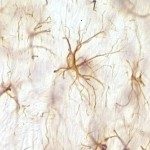Lien vers Pubmed [PMID] – 34282773
Lien DOI – 331710.3390/cancers13133317
Cancers (Basel) 2021 Jul; 13(13):
Histone H2AX phosphorylated at serine 139 (γ-H2AX) is a hallmark of DNA damage, signaling the presence of DNA double-strand breaks and global replication stress in mammalian cells. While γ-H2AX can be visualized with antibodies in fixed cells, its detection in living cells was so far not possible. Here, we used immune libraries and phage display to isolate nanobodies that specifically bind to γ-H2AX. We solved the crystal structure of the most soluble nanobody in complex with the phosphopeptide corresponding to the C-terminus of γ-H2AX and show the atomic constituents behind its specificity. We engineered a bivalent version of this nanobody and show that bivalency is essential to quantitatively visualize γ-H2AX in fixed drug-treated cells. After labelling with a chemical fluorophore, we were able to detect γ-H2AX in a single-step assay with the same sensitivity as with validated antibodies. Moreover, we produced fluorescent nanobody-dTomato fusion proteins and applied a transduction strategy to visualize with precision γ-H2AX foci present in intact living cells following drug treatment. Together, this novel tool allows performing fast screenings of genotoxic drugs and enables to study the dynamics of this particular chromatin modification in individual cancer cells under a variety of conditions.

